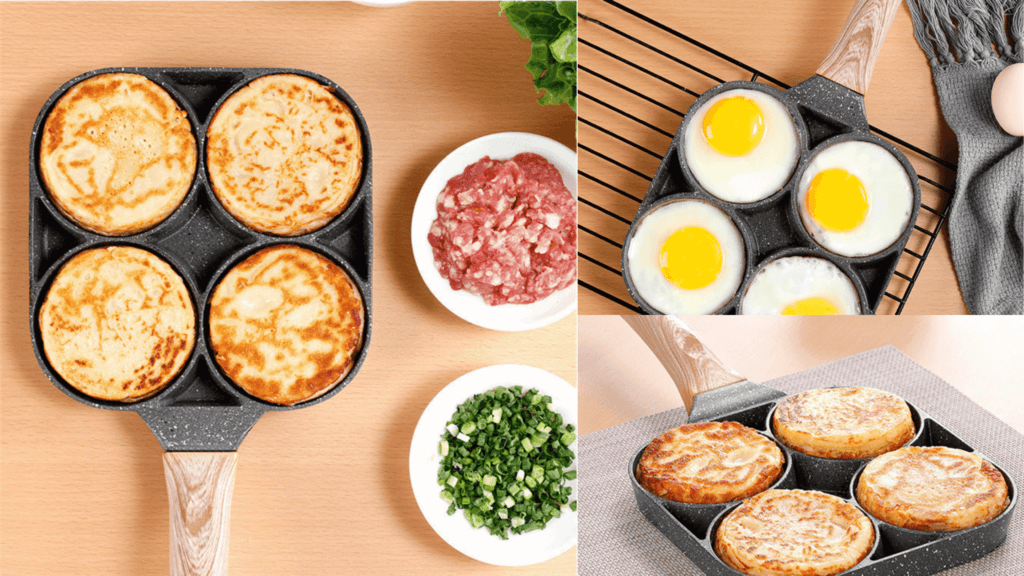Egg Frying Pan - How to Choose?
The choice of an egg fryer can be a daunting task. The abundance of tricks, hard sales, and poor quality pans make buying a pan difficult to complete. What do we think of when we advise one pan over the other?
The choice is yours to decide what you want to use (and sure, you can). What you’re planning to use, the pan should be the primary factor in the kind of pan you purchase. The majority of the time, it’s best to keep more than one pan to use in various situations. To assist you in making your decision, Here are some tips to consider.
Cooking using non-stick
Non-stick cooking egg frying pans are fantastic. They wash easily and allow cooking to be a breeze. They are also the ones we all make use of daily. The non-stick surface is constructed from a range of non-reactive materials that make these pans so great. Scanpan’s non-stick, for instance, is constructed from an alumina-based titanium coating, and Swiss Diamond boasts 1000s of commercial diamonds that are coated in their coating.
The general rule is that if the food you’re cooking could have a sticky consistency (like eggs) and requires moderate to low temperature, then non-stick is the best option. As with many other things, get the top quality you can afford. The coating will be of higher quality and last longer.
In general, nonstick reacts poorly to high temperatures. Therefore, to prolong the longevity that the coating has, you should use it at a medium to low temperature and ensure that you utilize nylon, plastic or wooden utensils to prevent scraping off the surfaces.
Warriors made of Stainless Steel
Do you need a great sear? Cast iron is your best option because it can transfer heat efficiently, making it ideal for cooking steaks. Cast iron is heavy and also heats evenly. It transfers heat very efficiently and retains the heat for longer durations. Because it’s so efficient, it is recommended to be used in the middle to low temperature and cook the steak perfectly – all you have to do is wait for the pan to get heated first, then cook the food only when it’s hot. Cast iron doesn’t react well to acids like wines, and therefore if you intend to deglaze it, you should use a stainless steel pan. Clean it after cooling the pan, use an abrasive sponge and natural like salt. Please keep it in a thin layer of cooking oil to stop the formation of rust spots.
One of the most crucial things for cast iron is to ensure that the pan is well-seasoned (or enamelled). There are a variety of ways to spice up a cast-iron skillet. Some suggest that you cook bacon only in a new pan for the first year or bake it with fat several times before use. To season an old skillet, clean it off any rust or crusts that may have formed on food items, then let it dry completely. Rub the pan with a thin coat of oil before putting it in a hot oven. Increase the temperature to 180 degrees Celsius, and place the pan in. Let it bake at 180degC for 30 mins before letting it let it cool inside the oven. Once cool, wipe dry using paper towels, and the dish is ready to be used for the first time.
The non-stick patina is likely to increase with each time oil or oil is cooked in the skillet, and it will continue to get better and better if the pan isn’t scrubbed by water. If a thorough cleaning is necessary, then make sure to re-season. The re-seasoning process can be repeated as often as you wish and will improve the appearance of the skillet. When you turn the oven running to cook something else, you can simultaneously put the pan in the oven. Of obviously, not needed for cookware enamelled with cast iron, simply the regular cast iron.
As we can tell, there’s a dish to cook with any kind of food. The rule of thumb is to buy the top quality you can afford and then care for it properly. Careful maintenance will enhance the lifespan of any pot, so you’ll notice amazing items (and tasty food) through the many years. Enjoy cooking!
Conclusion
Yes, it’s worthwhile to purchase an Egg Frying Pan. If you’re in search of the highest quality egg frying pan, we’ve got it covered.

